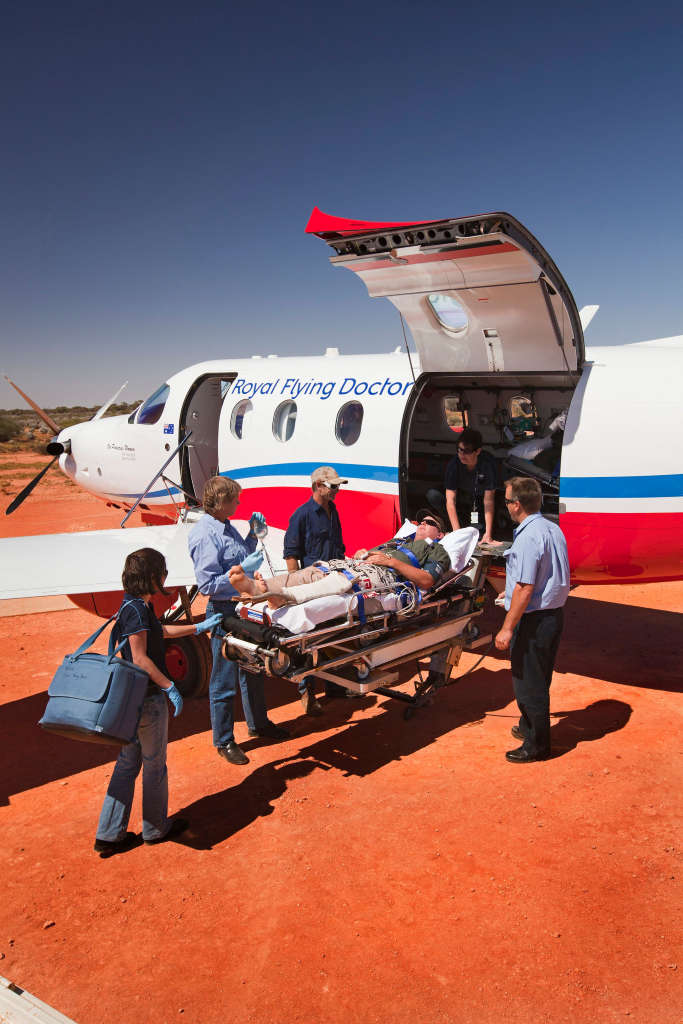New Report: Living longer against the odds
Luke Williams
08 February 2023, 8:40 PM
 Image: RFDS.
Image: RFDS. Rural and remote Australians are more likely to die at a younger age than people living elsewhere in the nation according to a new Royal Flying Doctors Service (RFDS) report, but there are things you can do to ensure you live longer.
“As recently as 2020, females in very remote areas were likely to die 19 years earlier than their counterparts in major cities, 13.9 years for males. Mortality rates were 1.5 times as high for women living in rural and remote Australia’s those living in major cities, and 1.3 times as high for men” says the Best of the Bush report conducted by the RFDS.
“Life expectancy between Indigenous and non-Indigenous people in remote and very remote Australia was around 14 years less for Indigenous.”
The report that the rates of death in particular for:
- Diabetes at 3.8 times higher in very remote areas compared with major cities and the second leading cause of death, while only the seventh in major cities;
- Suicide at 2.3 times as high in very remote areas;
- Coronary heart disease at 1.7 times as high in very remote areas
The report identified a number of key areas where people in rural and remote areas had a far greater incidence of disease including:
- Kidney and urinary disease at 2.7 times higher than metropolitan areas.
- Infectious diseases 2.2 times higher than metropolitan areas.
- Self-inflicted disease at 2.1 times higher.
In an interview with the Western Plains App RFDS Executive Director Frank Quinlan said “One of the main findings of the report is that the further you go out the poorer the access to primary health care".
RFDS analysis found nearly 45,000 people across the nation have no access to primary healthcare services, while nearly 58,000 people Australia-wide have no access to a local GP at all. Access to dental and mental health services were even more dire.
However, Quinlan reiterated throughout the interview that the reasons for the health disparity were “complex” and “multi-faceted”.
For instance he says rural and remote communities have higher levels of alcohol and tobacco use for reasons that researchers don't yet fully have an answer for. He said to people in rural and remote communities tend to have lower incomes and people on lower incomes almost always have worse health outcomes compared with our socio-economic groups. He also said people in rural and remote areas tend to exercise less than people in major cities.

Image: RFDS.
But there was one common theme in both the discussion in Quinlan and the report – it's the foods we eat.
“Poor diet, comprising low amounts of fruits, vegetables and whole grains coupled with high intakes of sodium and saturated fat, is a primary contributor to the development of chronic disease, especially cardiovascular disease, type 2 diabetes, high blood pressure, and chronic kidney disease” the report said.
The report said that only one in ten people in rural and remote areas eat the recommended daily vegetable intake. While 71% of us are overweight or obese.
We are not the only ones in Australia with this problem.
A study published in the “Nutrients” scientific journal in 2020 stated “Dietary risk factors, namely, low intakes of fruits, vegetables, and whole grains and high intakes of sodium and saturated fat, are now the leading preventable risk factors contributing to the burden of disease in Australia”.
While diet is something within an individual’s power to improve, there are other reasons rural and remote residents can have poorer diets.
Poor access to health food, transportation costs and time for bringing in healthy foods, and the problem of shopping outside local areas - creating a vicious cycle so that local shops stop stocking healthy food according to a paper by Australian academics in the scientific journal; The International Journal of Environmental Research and Public Health.
Frank Quinlan from the Royal Flying Doctors Services says yes, it’s about a good diet, more vegetables, less sugary drinks, less alcohol, no smoking, more exercise, but also a much overlooked factor he says is “having good social connections. Make good friends. Have supportive people in your life that care about your health. Be part of your community. People who are socially connected live longer”.




